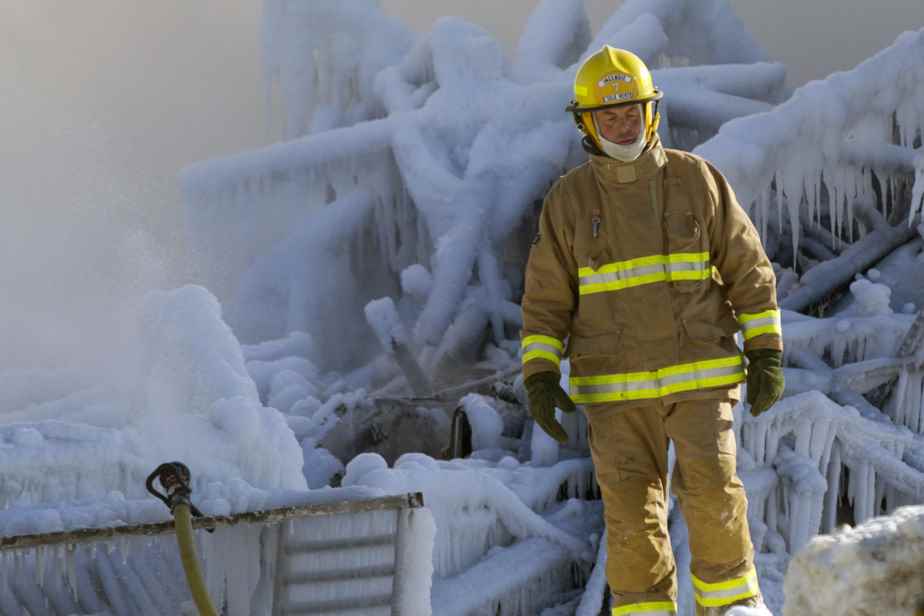The exercise is practically impossible to do and yet the photographers of The Press have lent themselves to it: among the (tens of) thousands of images they have taken since the beginning of their career, which are the 10 most striking? A heartbreaking and very personal choice. Here is Olivier Jean’s selection.

PHOTO OLIVIER JEAN, LA PRESSE ARCHIVES
March 2015 — Ho Chi Minh City
As part of a file on international adoption, I followed the long journey of a mother who wanted to adopt a boy abroad. While accompanying her to Vietnam where she was going to meet her new son, I visited an orphanage in Ho Chi Minh City, the country’s largest city. Hundreds of children were waiting there to find a family. I came across this little boy, alone, who was tied to his bed and screaming, without anyone coming to help him.

PHOTO OLIVIER JEAN, LA PRESSE ARCHIVES
September 2015 — Trois-Rivières
I have a great interest in aboriginal issues. It was while working for an investigation into the tragic and ignored death of dozens of Quebec Aboriginal children that I met Délima Flamand, mother of Marie-Pier Moar. Her daughter committed suicide at 11, after being beaten and raped, just before starting her 6e year at elementary school in Manawan, an Atikamekw community north of Joliette. His testimony is, to this day, one of the few to haunt my mind.

PHOTO OLIVIER JEAN, LA PRESSE ARCHIVES
August 2015 — Brossard
People often ask me what my favorite photo is. In general, I avoid answering… or so, to surprise, I speak of this one. After 23 years in the business, during which I have photographed just about everything, from simple bottles of wine on a white background to human dramas and major sporting events, all over the world… the image of a stuffed giraffe for which you have to drill the ceiling because it is too big delights me. Human contradictions will always amaze me. I love everything about this photo.

PHOTO OLIVIER JEAN, LA PRESSE ARCHIVES
September 2015 — Inukjuak
A mother’s crying and screaming are probably the hardest things to hear. That day, Caroline Qumak, a mother of five, hid her face in her hands and wept for a long time in almost silence, sitting on the floor in the center of her messy living room, when asked to speak about her children killed by a lung disease that is no longer fatal in the rest of Quebec.

PHOTO OLIVIER JEAN, LA PRESSE ARCHIVES
January 2017 — Quebec
This bullet impact is the first thing that struck me when I entered the Islamic Cultural Center of Quebec, where a shooter had opened fire the day before, killing 6 people and injuring 19. I have a strange memory of this visit on this cold January evening. A man had invited me to visit the center saying to me: “Come, come and show what violence is. I returned there a year later, I remembered exactly where that hole was and, above all, I heard again the voice of the man who had opened the doors of the place to me.

PHOTO OLIVIER JEAN, LA PRESSE ARCHIVES
August 2019 — Montreal
I like to take pictures with very slow exposure speeds and thus capture the passage of time, which is invisible to the naked eye. This shot of Rafael Nadal serving on center court at Jarry Park is just one example of the hundreds of long exposure images I’ve taken over the past 10 years to The Press. The results often make me think of paintings.

PHOTO OLIVIER JEAN, LA PRESSE ARCHIVES
April 2020 — Montreal
At the start of the pandemic, it was impossible to visit health facilities to document the ravages of COVID-19. At night, I went from CHSLD to CHSLD and from hospital to hospital to try to photograph what was happening inside through the windows. One evening, I came across this CHSLD Yvon-Brunet employee who looked exhausted. I found it frustrating to have to tell this tragedy through a screen, as if we were watching television. Fortunately, I subsequently had several opportunities to document the crisis from the inside.

PHOTO OLIVIER JEAN, LA PRESSE ARCHIVES
June 2020 — Philadelphia
Going to the United States to cover the protests that followed the death of George Floyd at the hands of police had its price: 14 days of quarantine on return. When I was offered to go there, I did not hesitate. I felt it was important to bear witness to this uprising among our southern neighbors in the midst of a global pandemic. I love the look of this young woman ready to defy the current health measures, the curfew imposed by the police after the unrest in the country and the threats of arrest to make her voice heard alongside thousands of others .

PHOTO OLIVIER JEAN, LA PRESSE ARCHIVES
March 2022 — Puvirnituq
Young Inuit met on the ice of Puvirnituq during the Snow Fest, a cultural and sporting event that normally brings together Inuit from several Nunavik villages. Last year, however, the pandemic and a water shortage forced organizers to invite only residents of Puvirnituq to the party. The boy’s smile contrasted sharply with the violence and suffering I had witnessed so far in this village without water for weeks.
